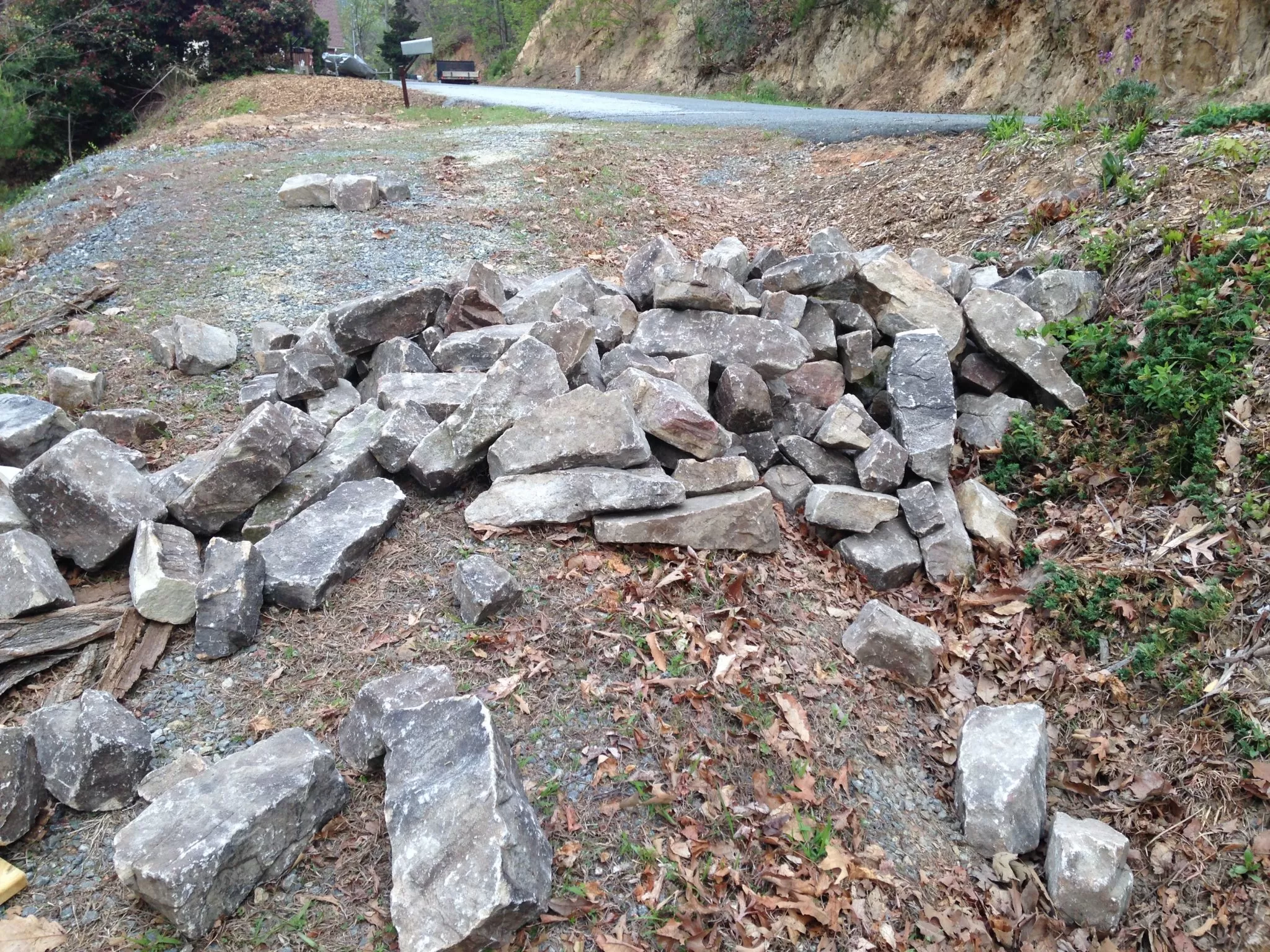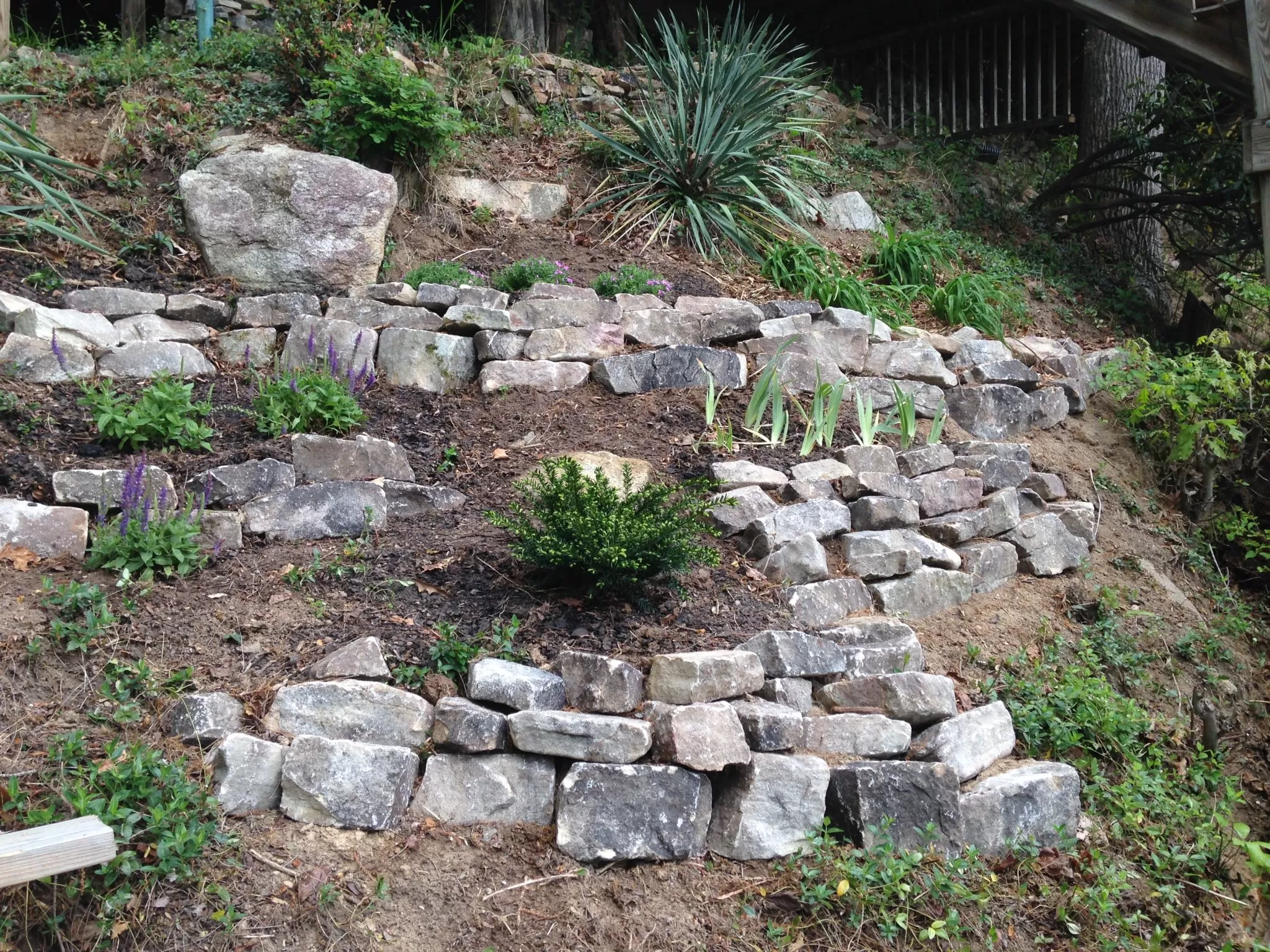A Rocky Love Affair
My love affair with rock walls certainly did not begin in the deep, loamy soil of the Illinois prairie, where it was hot in the summer, cold in the winter, and flat all year round.

And so it must have begun in 1986 with my personal discovery of the massive, six-story Grove Park Inn, constructed in 1913 by 400 men and as many mules hauling one- and two-ton granite boulders down from Sunset Mountain to a ledge scraped out above Asheville’s famed Donald Ross golf course.
It was while researching the history of this iconic Arts and Crafts resort that I learned my first lesson in rock construction. In a letter sent to foreman Oscar Mills, the hotel’s architect wrote, “Calculate carefully how many rocks you will need – then double that number.”
Ever since moving to Asheville I have been building both mortar and dry-stack retaining walls on the slopes of each house I have lived in. It was on my first trip to a local stone yard that I learned my second lesson in rocks. I drove into the expansive potholed yard in my Dodge Caravan and began walking around the wired one-ton pallets of various shapes, sizes and colors of rocks in my khaki shorts and white tennis shoes, waiting anxiously for someone to come out of the unpainted shack next to the scales. After half an hour of waiting, I finally got back into my car and left.
But I returned the next day, this time in my old blue and battered Ford F-150 pickup, accompanied by my yellow lab Jake. I wore my work boots and an old pair of jeans with two worn leather gloves hanging out the back pocket. Jake and I hadn’t walked more than twenty feet inside the row of pallets before two good ol’ boys came scurrying out of the shack ready to help me.
Dress for success, right?

And so, thirty years later, I found myself back at my familiar rock yard last week, where they now know me by name. My truck is newer, Jake has passed on and was replaced by Daisy and Jasper, and rocks have gotten more expensive, but I still get excited about building even just some low rock retaining walls for planting beds. An hour later, their driver dumped 3,175 pounds of Tennessee granite at the top of my driveway, seventy-seven feet and forty-three steps away from the crumbling slope (below) I had planned to stabilize with a series of low, dry-stack walls that would also define some new planting beds.

The rocks weighed from ten to forty pounds each and, since my wheelbarrow wouldn’t work on the steep steps, I had to carry them down by hand. I could handle three ‘smaller’ rocks in a bucket, but the heavier ones I walked down one at a time, all 131 of them. Needless to say, I didn’t bother — nor would I have been able — to go to the gym afterwards.
But at the end of what turned out to be a sunny, pleasant spring day, I had created five natural-looking planting beds (below), moved some iris plants into one of them, prepped the others for the flowers and shrubs Leigh Ann had selected, and turned an eyesore of a small slope into what will soon be a lush planting area for us, the swallowtail butterflies and our pair of darting hummingbirds to enjoy all summer.

Until next Monday,
The more you do, the more you can do.
Bruce
Note: Check out next week’s Collector’s Guide for some tips on laying an Arts and Crafts natural stone retaining wall.
